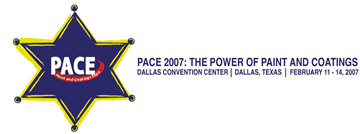Search
Individual Conference Papers
View as
Sort by
Display
per page
Innovative Inspection Techniques for Worlds Largest Capacity LNG Storage Tanks
Product Number:
51319-13492-SG
Publication Date:
2019
$20.00
Innovative Mitigation Strategies to Address Ac Corrosion At Higher Frequencies
Product Number:
51323-19280-SG
Publication Date:
2023
$20.00
Innovative Performance Corrosion Resistance Reinforcing Bars for Extending Service Life
Product Number:
51324-20682-SG
Publication Date:
2024
$40.00
In-process Quality Control and Quality Assurance Coatings Inspection: Redundant or Complementary Roles?
Product Number:
51323-19006-SG
Publication Date:
2023
$20.00
IN-SERVICE OIL AND GAS PIPELINE SAFETY ASSESSMENT PRACTICE AND PROGRESS IN CHINA
Product Number:
51300-03152-SG
ISBN:
03152 2003 CP
$20.00
In-service Welding of MEG Stainless Steel Pipes
Product Number:
MPWT19-15309
Publication Date:
2019
$0.00
Insights Into Hydrogen Embrittlement (HE) Susceptibility Of Martensitic Steels Using Finite Element Analysis (FEA) And Experiments.
Product Number:
51321-16887-SG
Publication Date:
2021
$20.00
Insights into the Consideration and Selection of Viscoelastic Materials for Potential Use in Field Patch Application
Product Number:
51220-294-SG
Publication Date:
2020
$20.00
In-Silico Model for Predicting the Corrosion Inhibition Efficiency of Mild Steel Inhibitors
Product Number:
51319-13329-SG
Publication Date:
2019
$20.00
In-situ 3D Analysis of Hydrogen Induced Cracking Behavior in Linepipe Steels to Investigate Sour Environmental Severity
Product Number:
51321-16383-SG
Publication Date:
2021
$20.00
In-situ Anodic Polarization with Concurrent Imaging of Precursor Sites for Pitting in UNS S32305Dupl
Product Number:
51312-01526-SG
ISBN:
01526 2012 CP
Publication Date:
2012
$20.00












